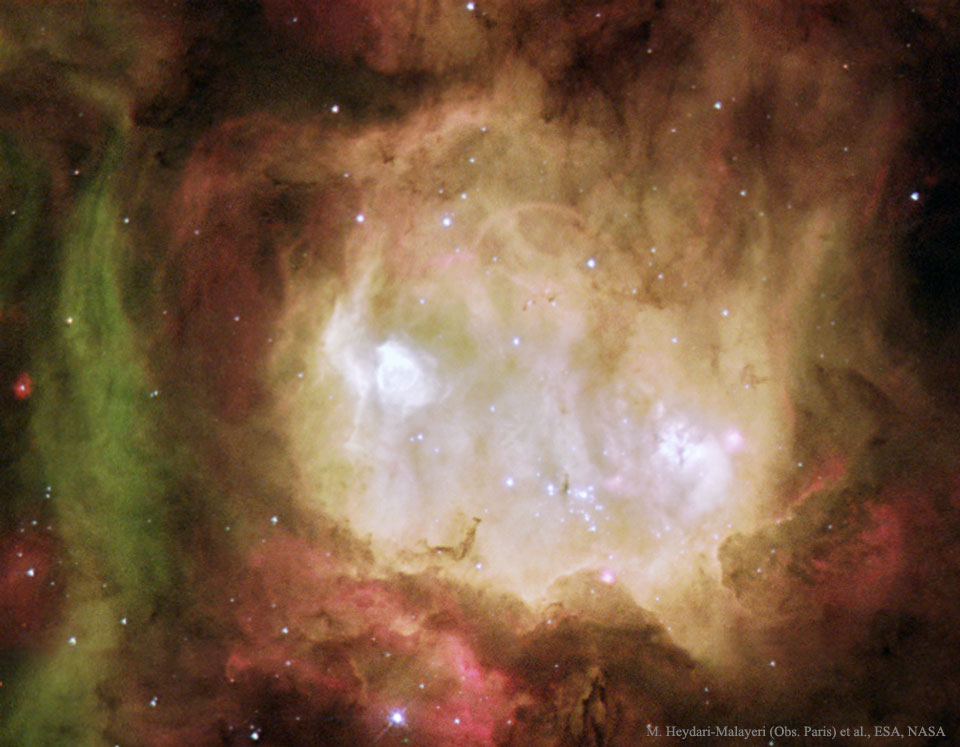万圣节和鬼头星云
(原标题: Halloween and the Ghost Head Nebula)
2021-10-24
浏览次数: 172
万圣节的起源很古老,而且是天文数字。自公元前五世纪以来,万圣节就被作为一个跨四分之一日来庆祝,这一天位于春分(等日/等夜)和至日(北半球白天最少/黑夜最多)之间。然而,在现代日历中,尽管万圣节是在下周,但真正的跨季度日将在下一周。另一个跨季度日是土拨鼠日。万圣节的现代庆祝活动保留了历史根源,即穿着衣服吓跑死者的灵魂。也许这张用哈勃太空望远镜拍摄的鬼头星云的照片是对这个古老节日的最恰当的致敬。与虚构鬼魂的图标相似,NGC 2080实际上是大麦哲伦星云中的一个恒星形成区,大麦哲伦星云是我们银河系的一个卫星星系。鬼头星云(NGC 2080)跨度约50光年,以代表性的颜色显示。
查看原文解释
Halloween's origin is ancient and astronomical. Since the fifth century BC, Halloween has been celebrated as a cross-quarter day, a day halfway between an equinox (equal day / equal night) and a solstice (minimum day / maximum night in the northern hemisphere). With a modern calendar however, even though Halloween occurs next week, the real cross-quarter day will occur the week after. Another cross-quarter day is Groundhog Day. Halloween's modern celebration retains historic roots in dressing to scare away the spirits of the dead. Perhaps a fitting tribute to this ancient holiday is this view of the Ghost Head Nebula taken with the Hubble Space Telescope. Similar to the icon of a fictional ghost, NGC 2080 is actually a star forming region in the Large Magellanic Cloud, a satellite galaxy of our own Milky Way Galaxy. The Ghost Head Nebula (NGC 2080) spans about 50 light-years and is shown in representative colors.
